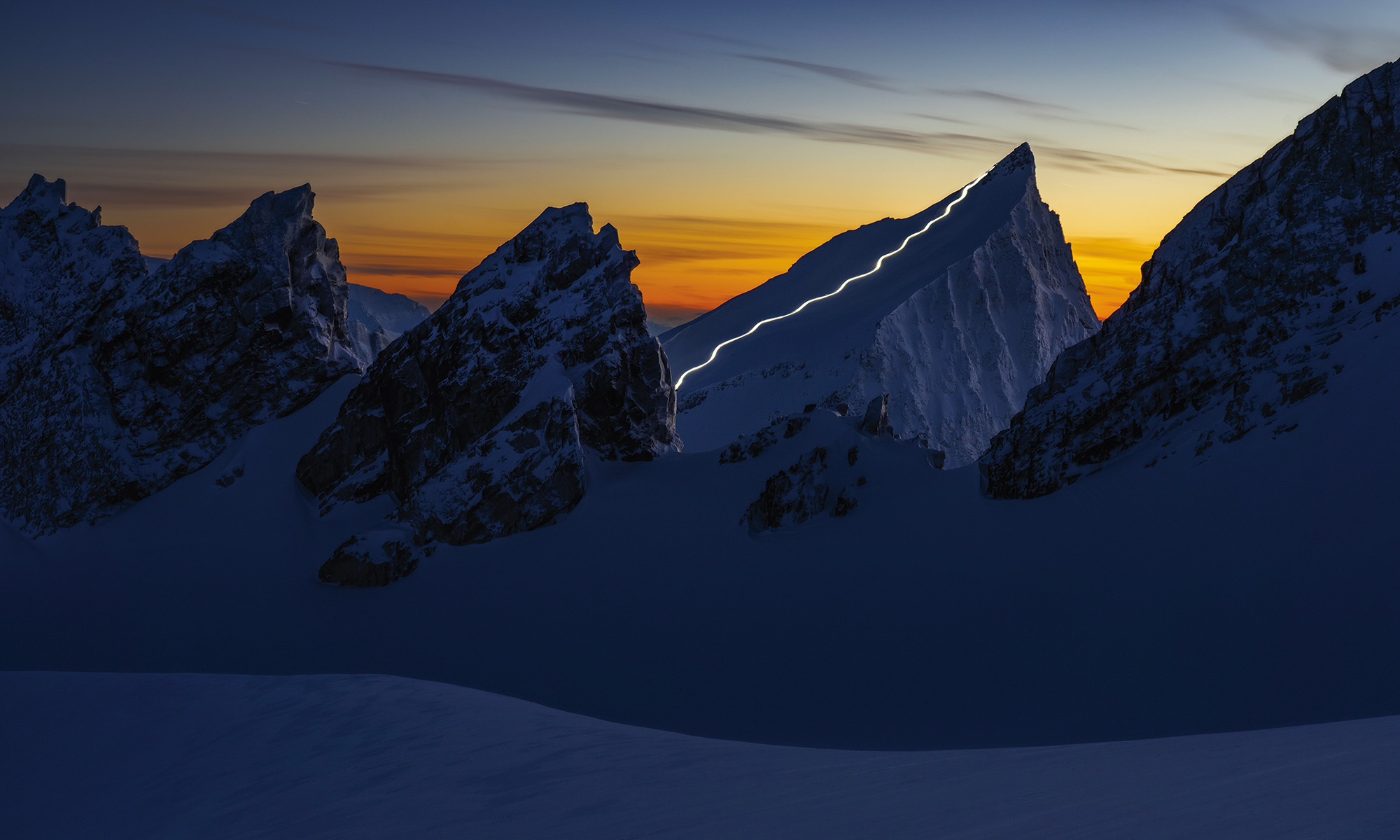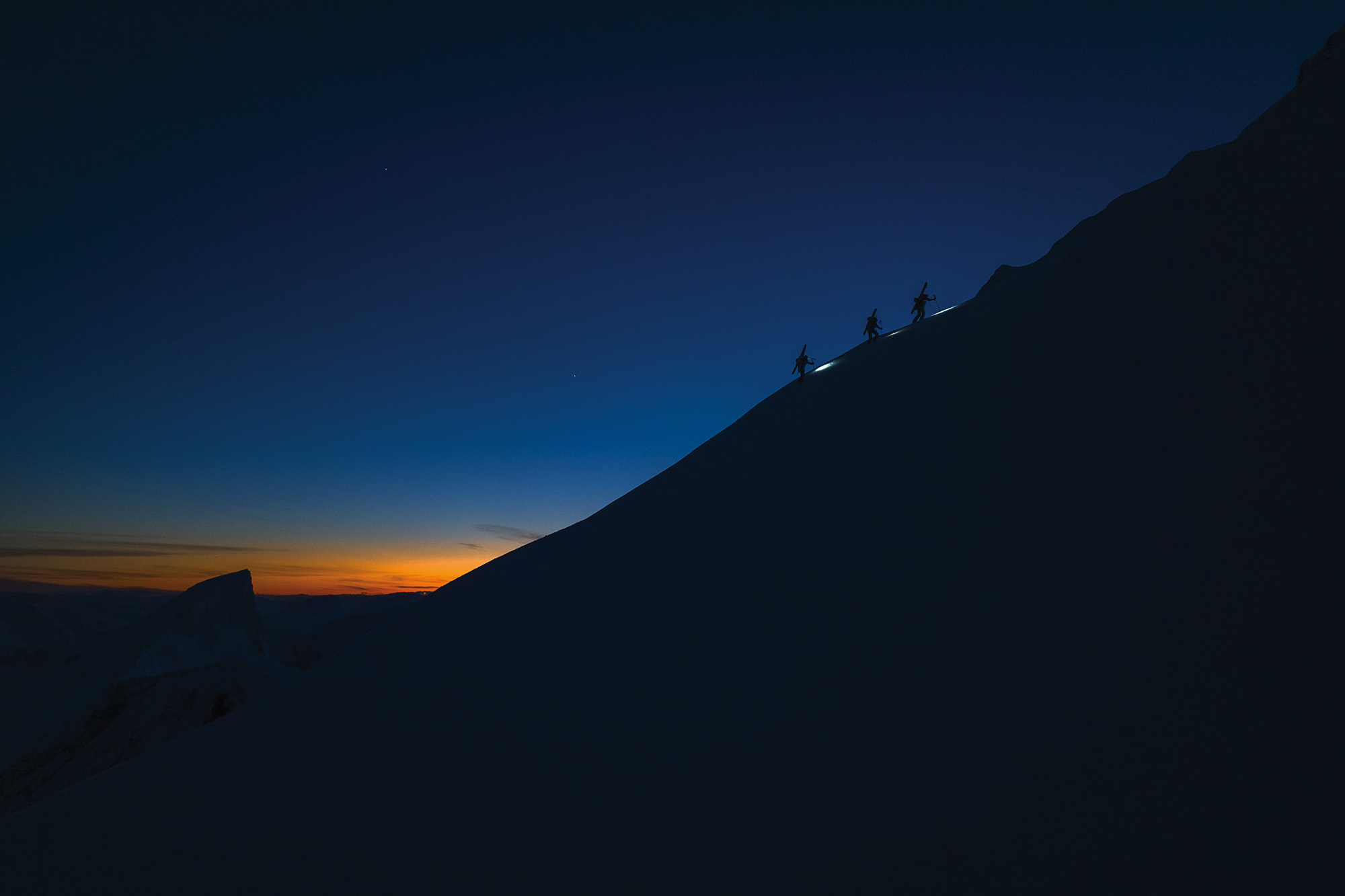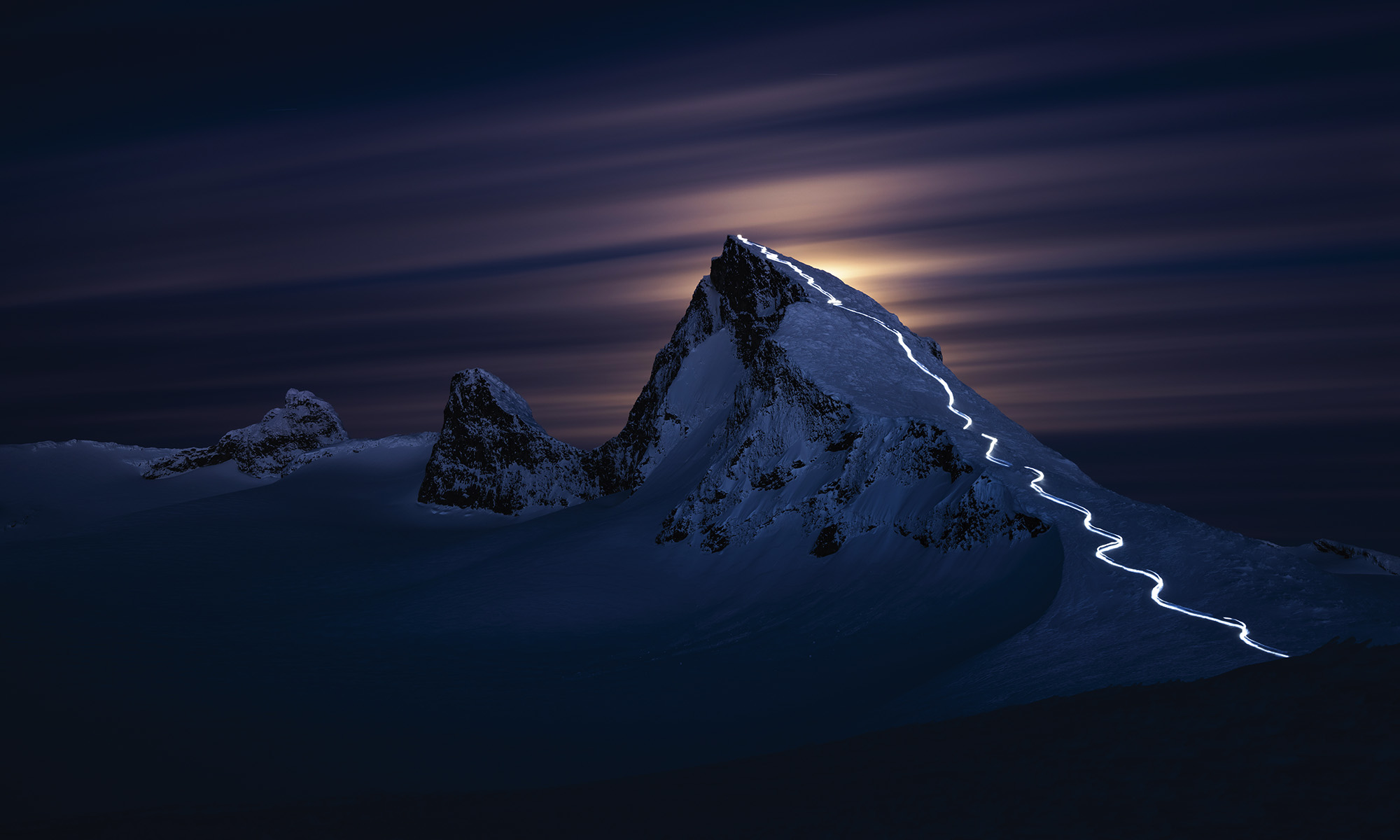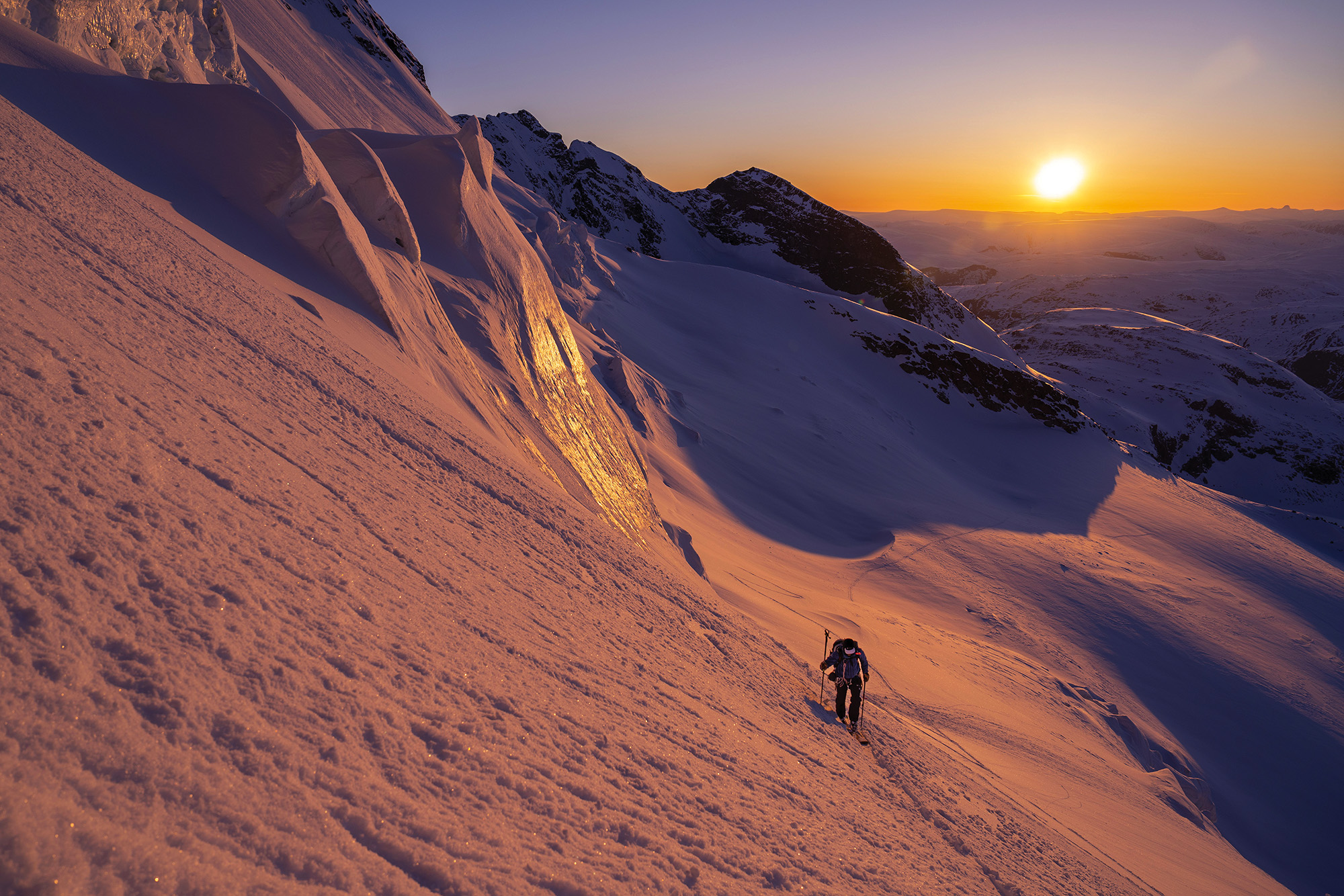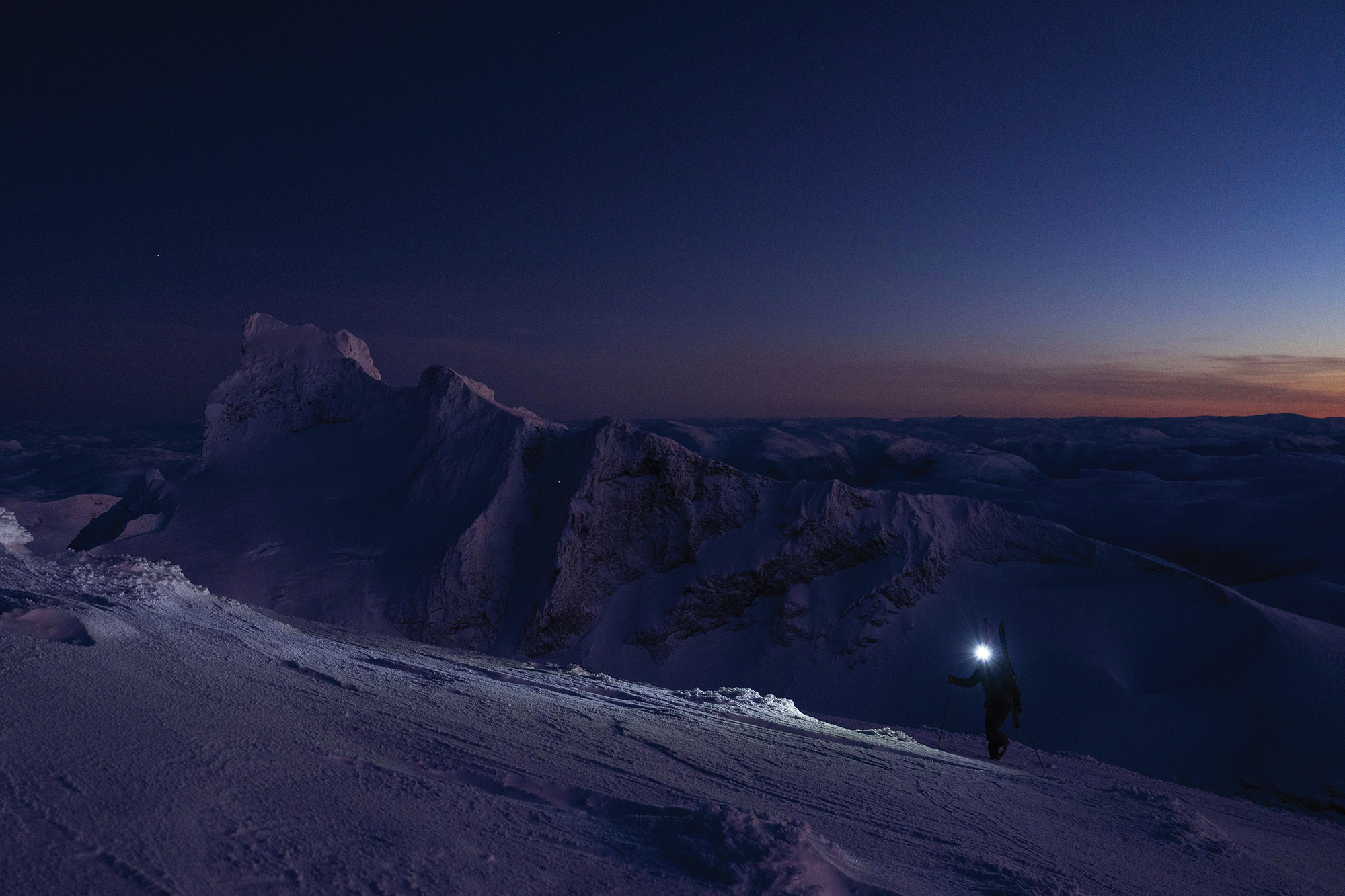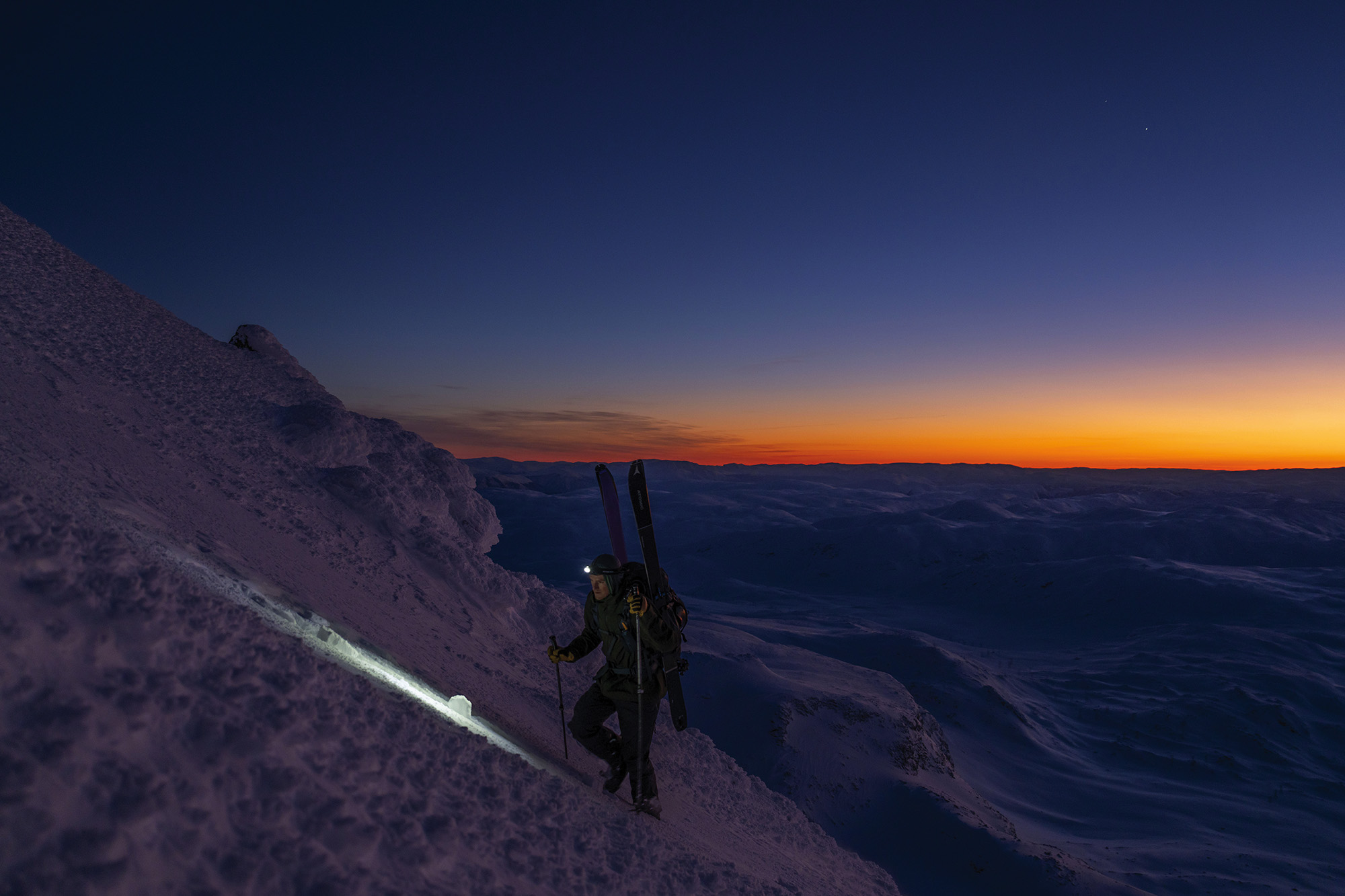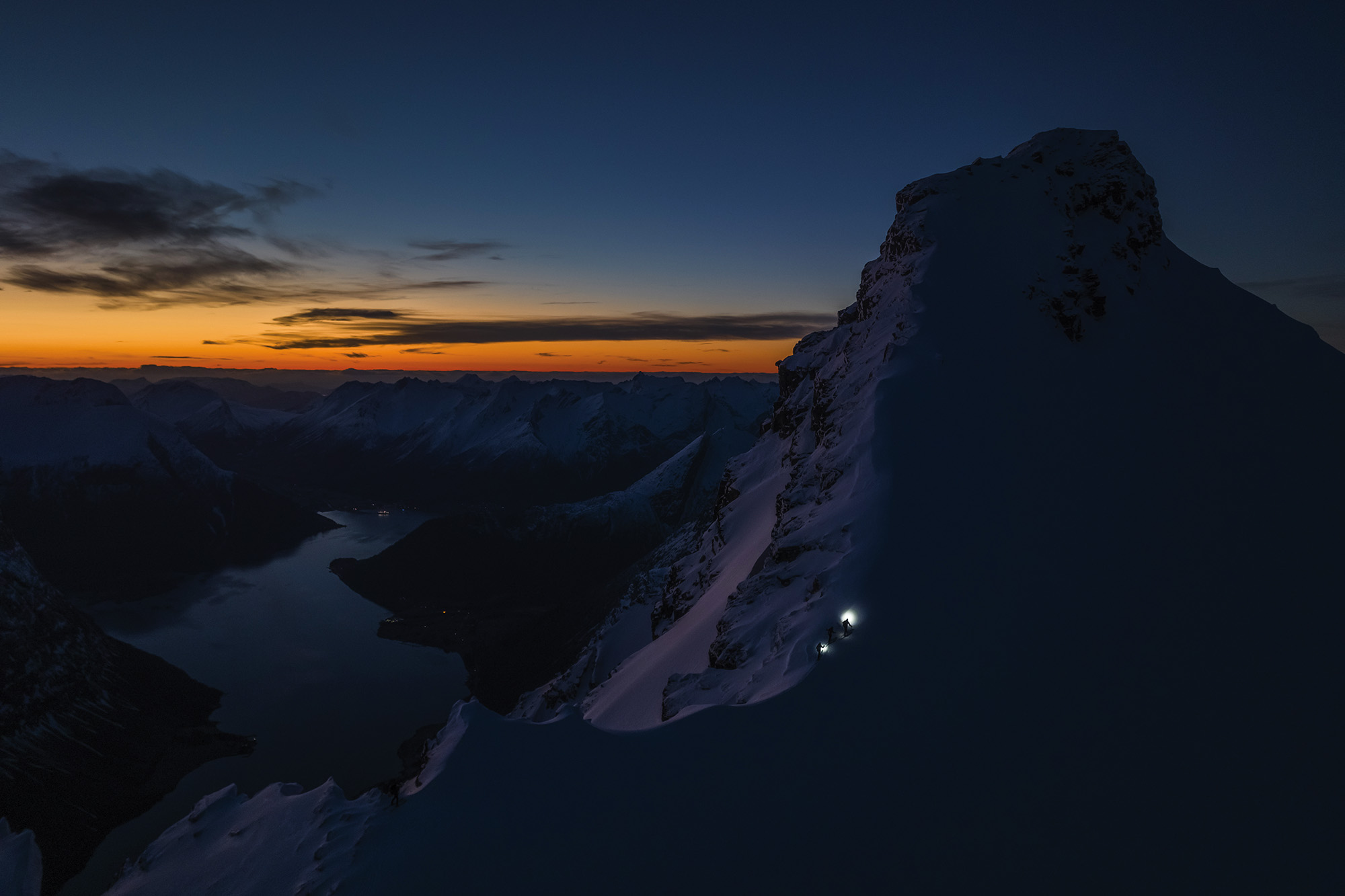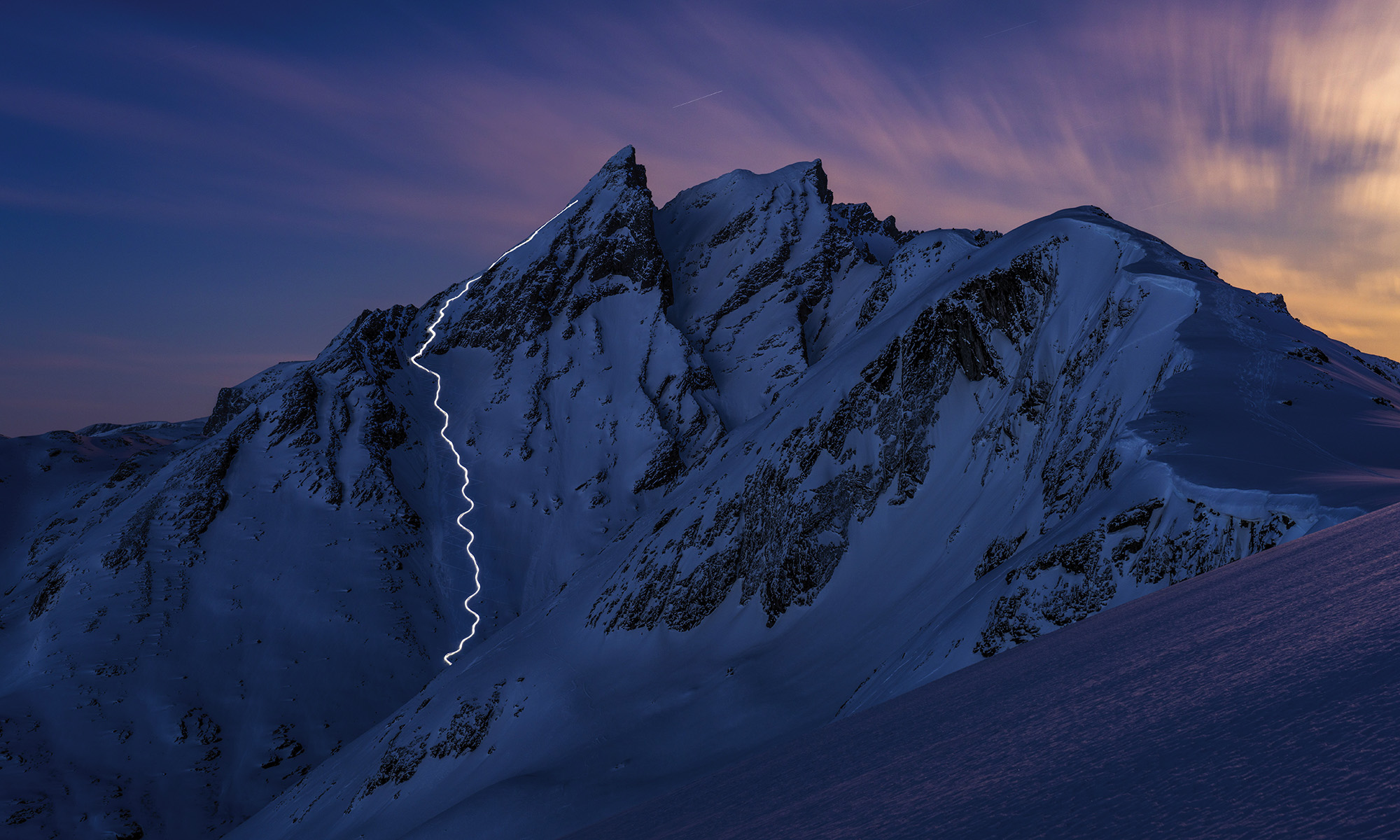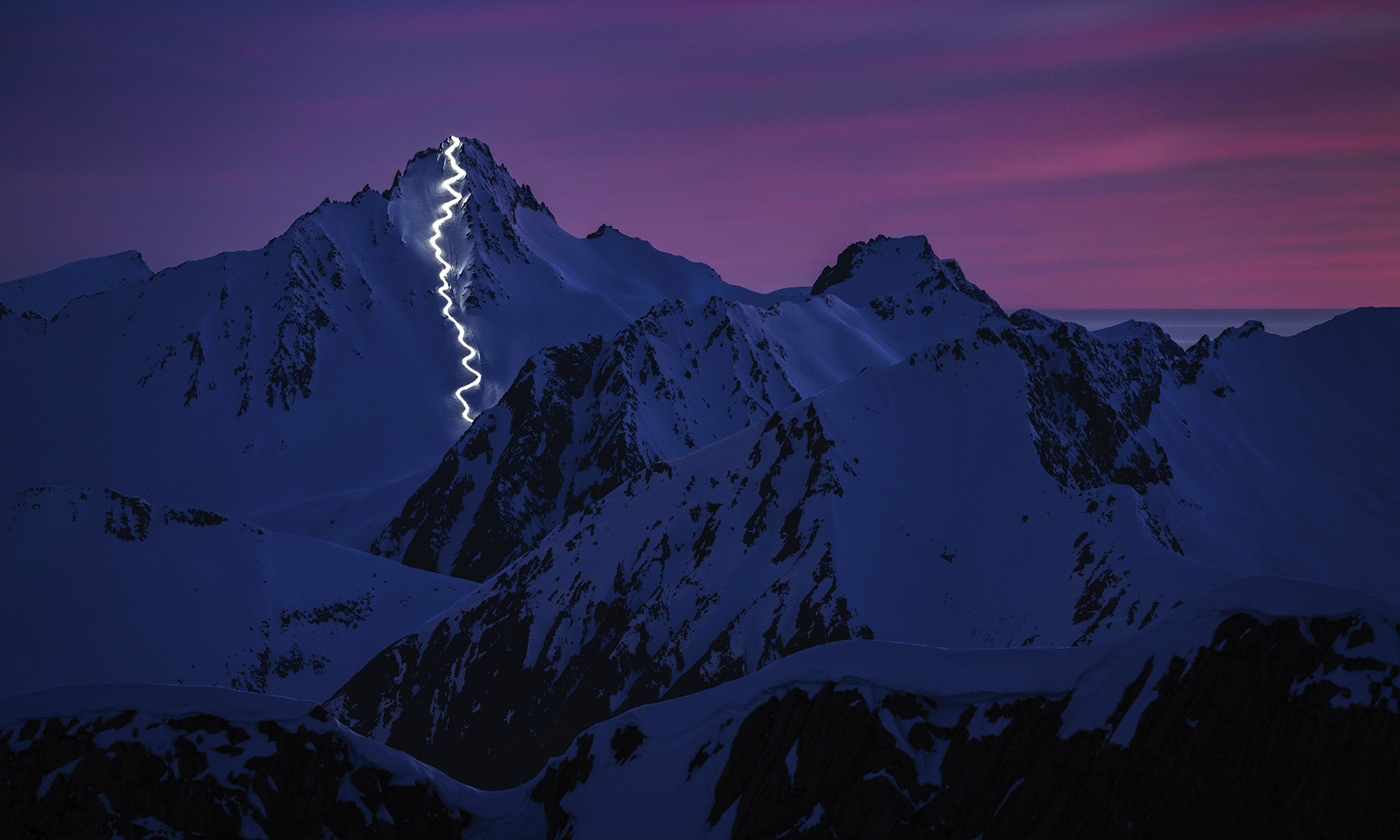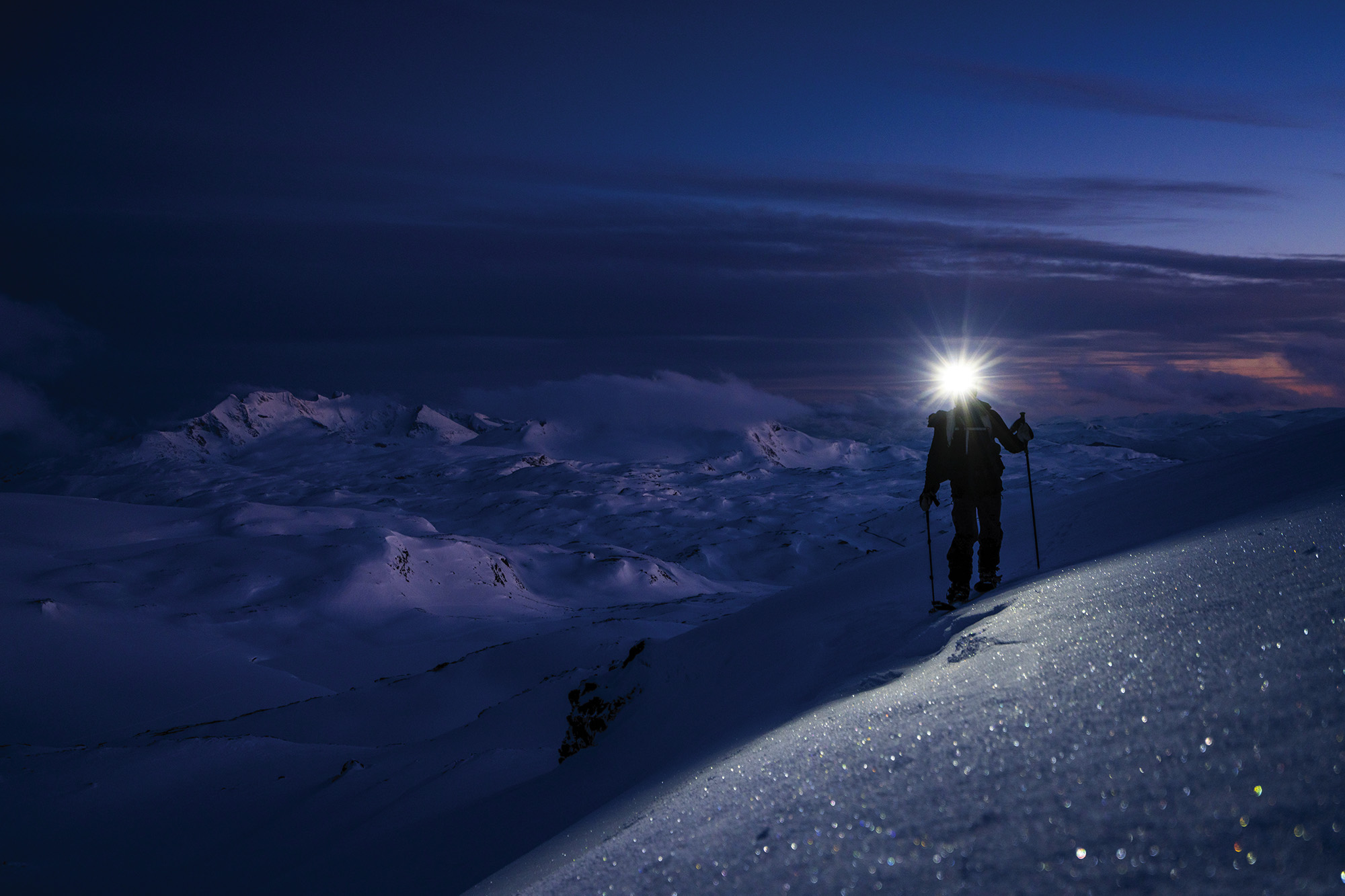By: Eva Toschi
Light Lines: bright but not ephemeral
In preparation for the talk I have to have with Vegard Aasen and Calumn Macintyre, the two souls of Light Lines, I immediately find myself admiring their photographic project: 10 images, 10 lines drawn in the northern darkness.
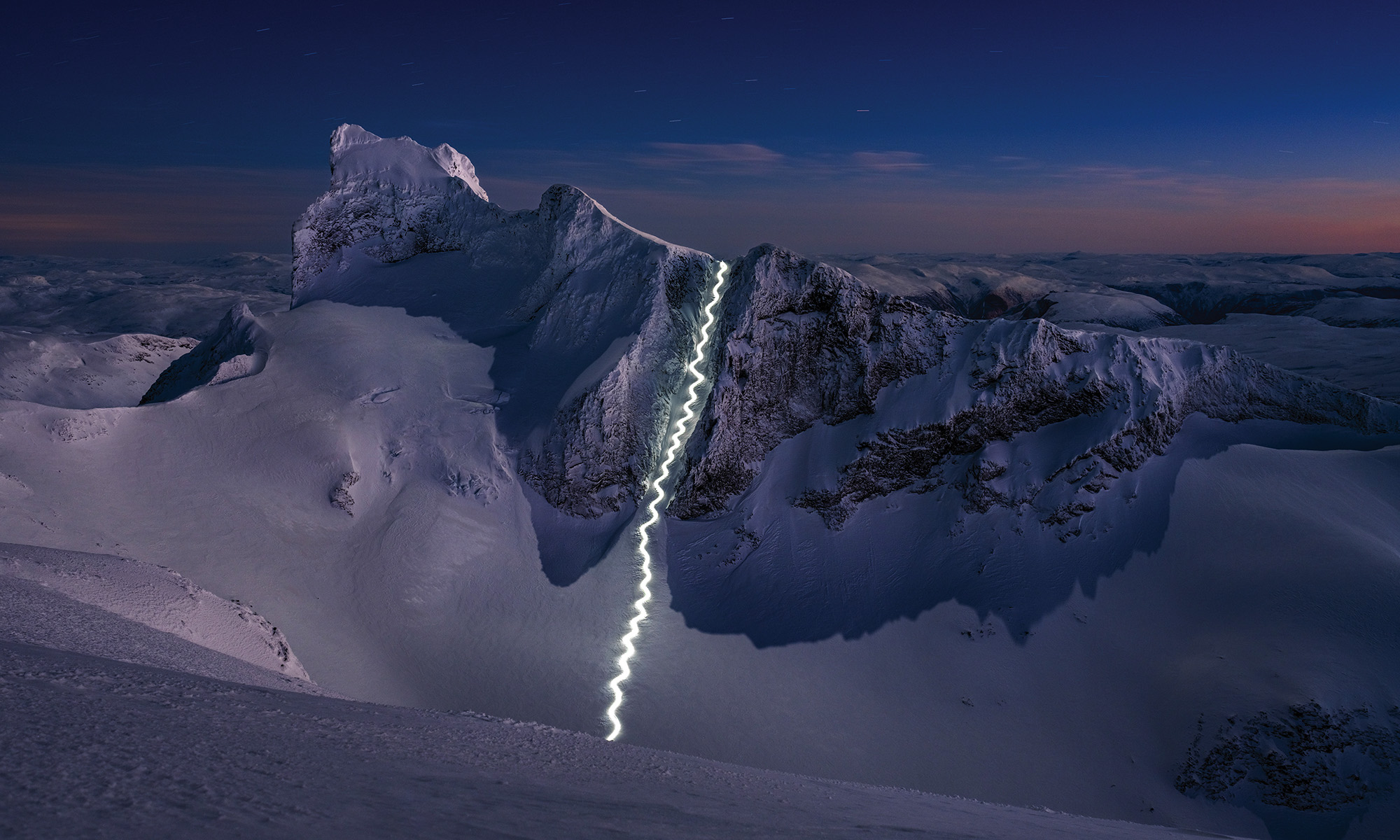
One, in particular, immediately grabs my attention; not so much because of its diversity but rather because I have already seen it, shown on a smartphone on a very gray spring day in Lapland by Martin, one of the skiers who took part in the project. Martin began telling me about it with an emphasis on how difficult it had been to coordinate to create the perfect shot; to get exactly what Vegard had envisioned and wanted to reproduce. Just the “technical” part alone, I was fascinated; then when, around a fire and drinking a beer in the midnight sunlight we moved on to talk about the motivation and meaning behind that photo I was totally won over.
For months I was clueless (about the shot, that is) and then here I am: we meet again by chance. And if one shot is joined by 9 others, just as engaging if not more so, and Martin’s explanations are joined by the passionate words of the two creators of the project, that’s when it becomes so easy to fall in love with it. As Calumn says, but more on that in a moment,
all it takes is a moment and anything can happen .
.
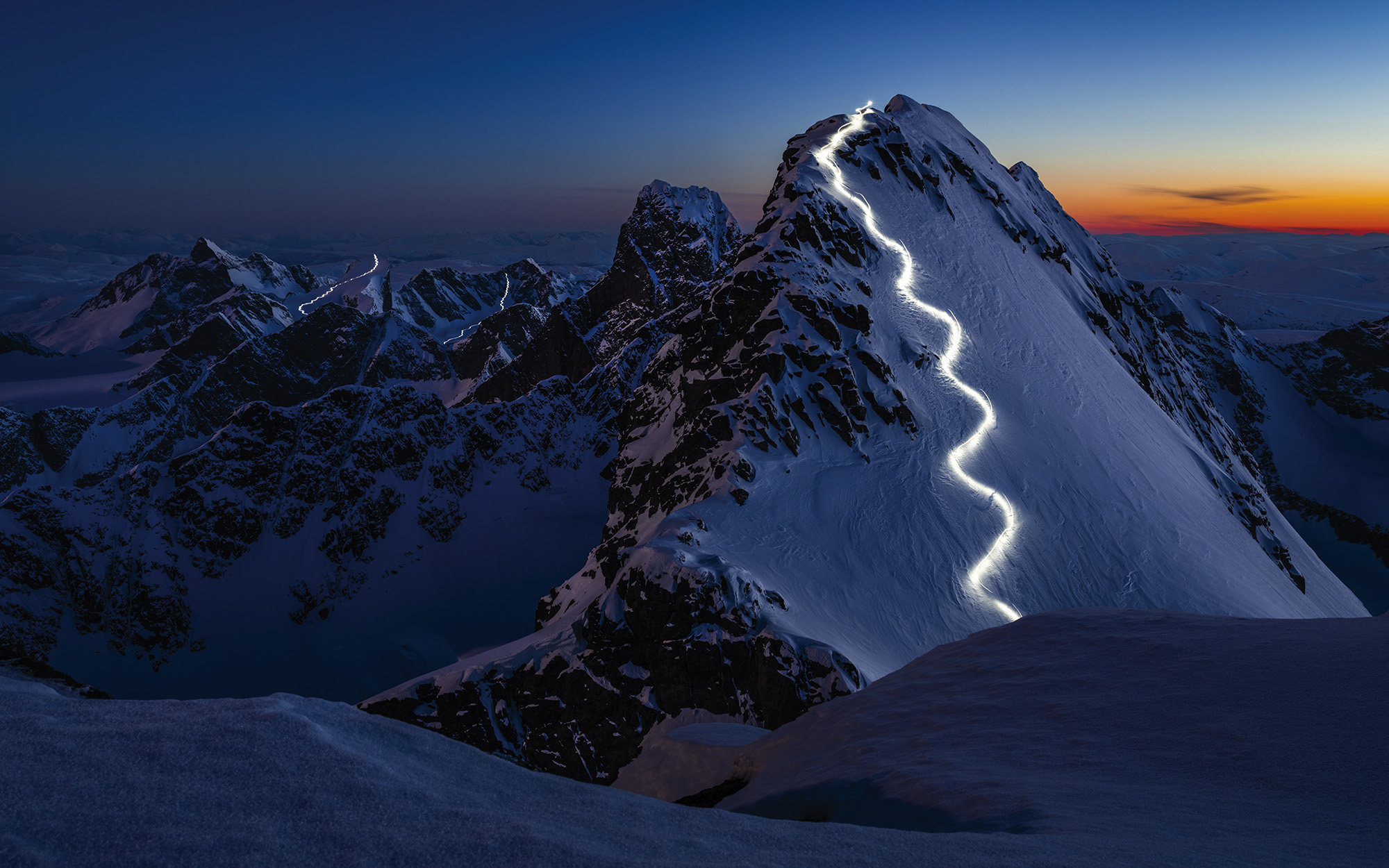
I finally find myself talking to two people who are thousands of miles apart but with whom I already know I share something very important: the correlation between man and nature and its expression through outdoor sports and art. Ah yes, also a friend, Martin. Initially I had prepared many questions to ask the photographer, Vegard, mistakenly thinking that Calumn was “just” one of the riders who had taken part in the project, but after the first question is answered by the latter, I immediately understand his involvement. It was Calumn who ignited the spark, who made Vegard realize that with photography one could go beyond the spectacularity of images; that one could convey a message and shake minds, that one could politicize.
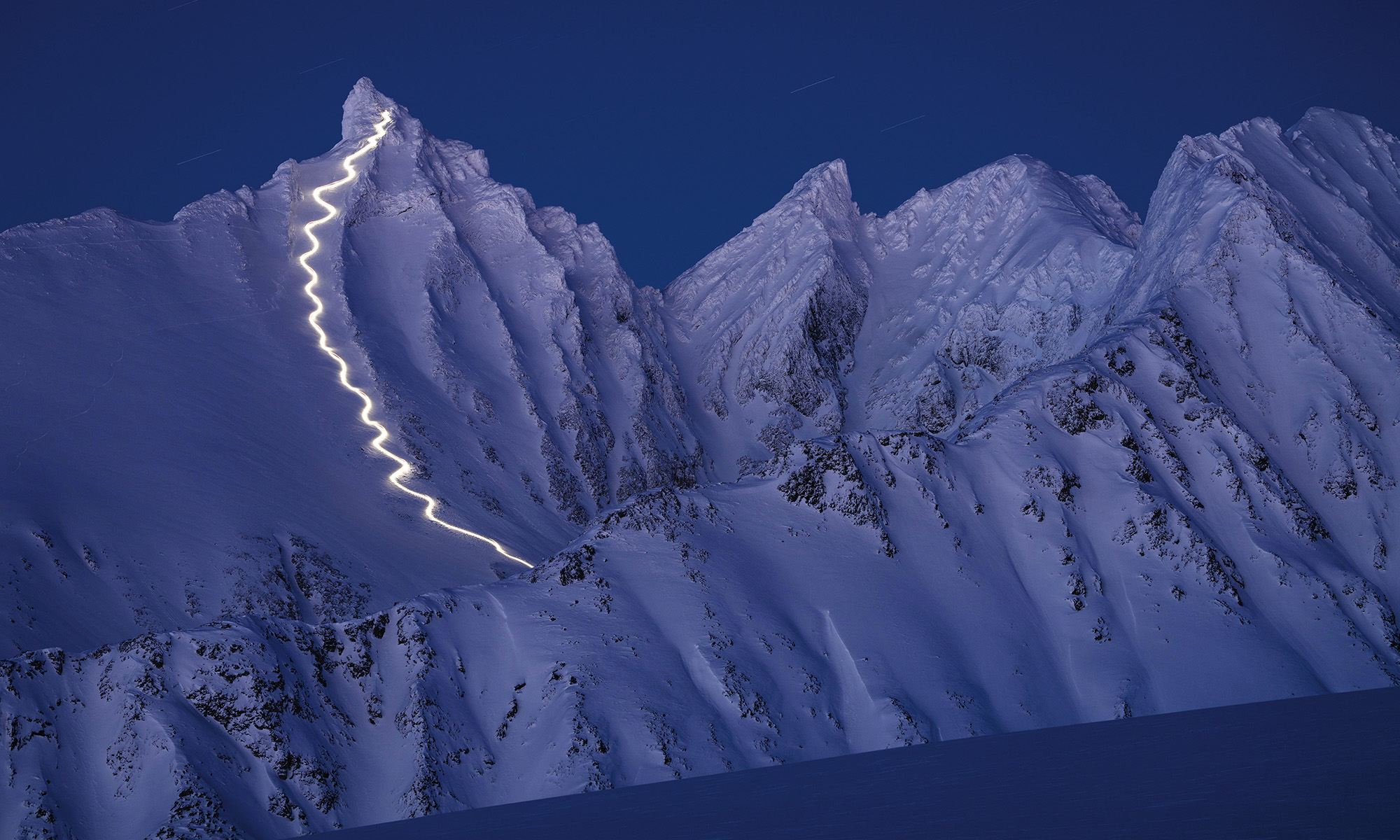
“Many people in the outdoor industry, ” Calumn tells me. “They are afraid of being judged if they express radical and political ideas; they are afraid to expose themselves. I am fed up with this system based on personal guilt and what we can do “in our own small way.” We must make our concerns the concerns of everyone, and we can only do this if together with others. We have no idea of the power we have as a community. That’s why it’s important to convey a message, and we decided to do it starting with photographic art and then going deeper through the word, written or spoken.”
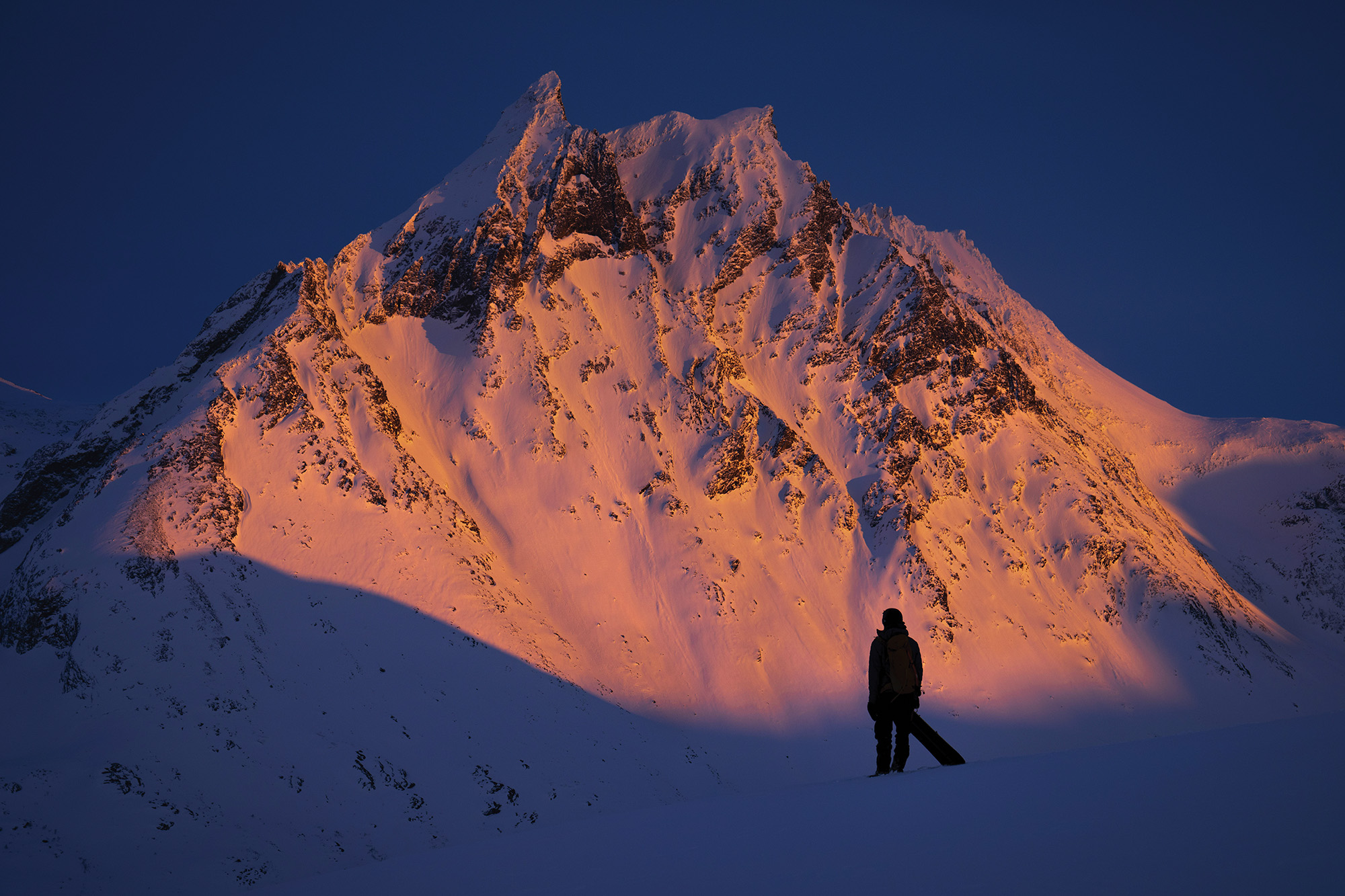
Of theimpact a photo could have, they realized it together, after taking “The Man in the Moon,” a photo Vegard took that depicts Calumn’s silhouette inside the full moon as he climbs solo to the summit of Austabotntind. The feedback coming in is that the photo had made people think about how small man appeared in relation to these wild spaces. Thus, together with the guidance of Calumn, an environmentalist with lots of experience and an expert on climate change, Vegard takes the courage to politicize himself and use his voice and art to convey a message.
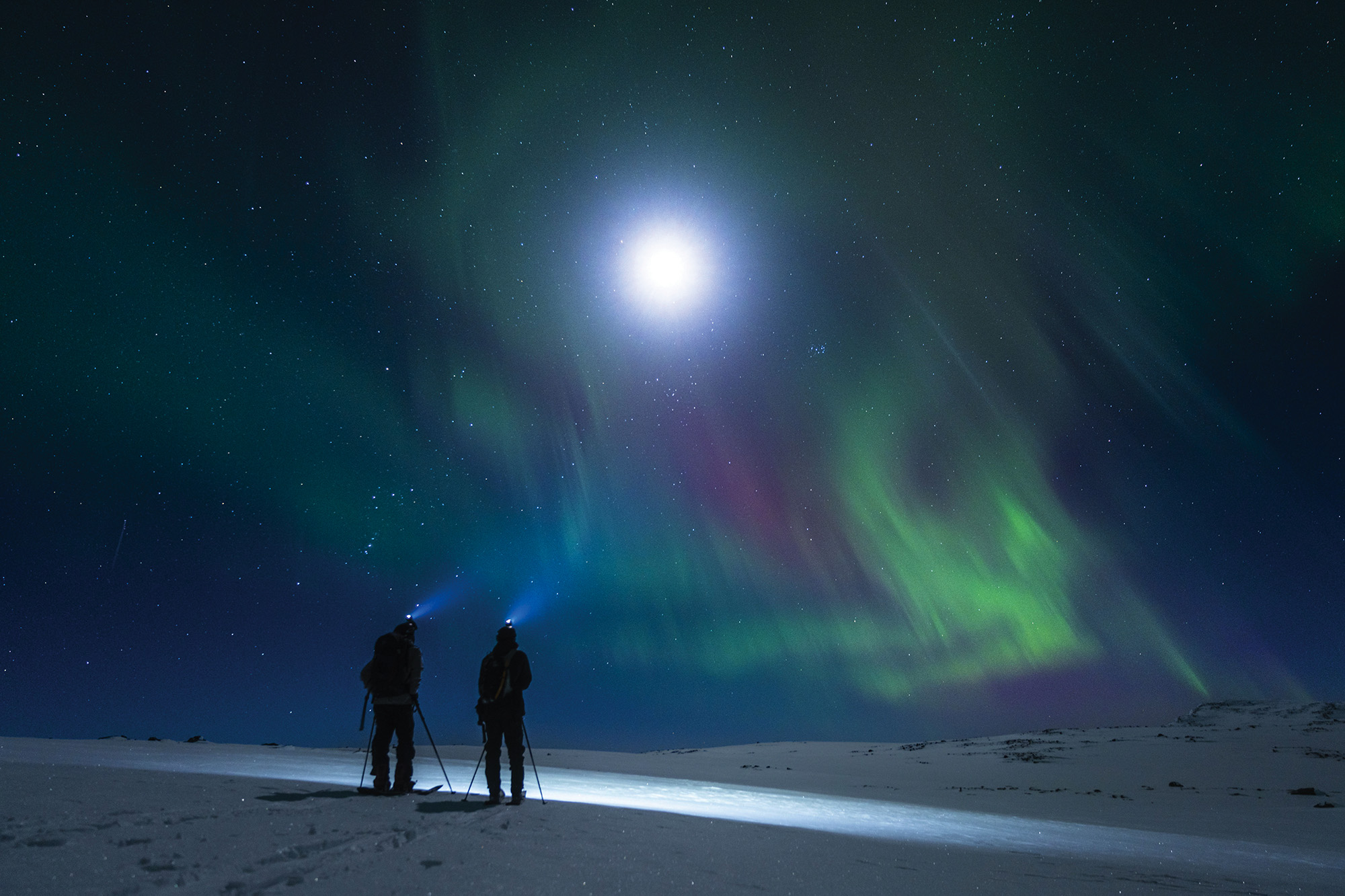
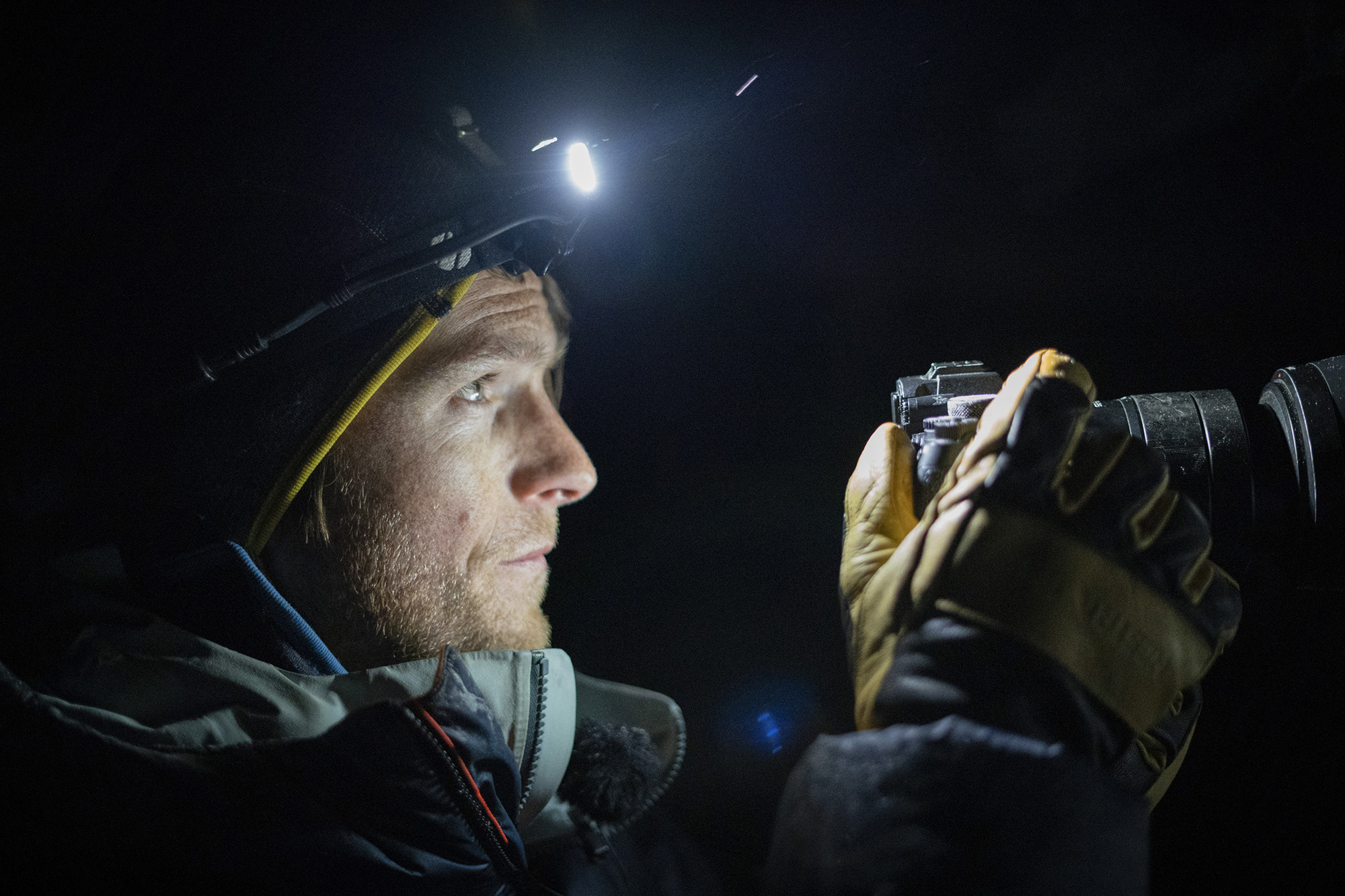
“Why not take a picture of someone skiing the couloir that cuts the north face of Austabotntind in half by lighting his descent with a headlamp and shooting in long exposure from the mountain in front?” Vegard asks Calumn on his way back from the shoot they had just completed on the same mountain. “I would like to capture a line of light that spectacularly marks the mountain, carefully balancing the bright light of the front with that of the dark sky.”
But what is this message and what do 10 photos taken on 10 iconic Norwegian peaks mean about a line of descent drawn by the skier’s foreheads? Immediately I think of wanting to emphasize the traces we leave, we human beings with our lusts and vanities, in wild places. But I quickly realize that this is a superficial view, seeing only part of the picture. The subject and not the whole. Then to go a little deeper, the question to ask is simple: “How come you decided to use lights as a symbol of human tracks?”
“You’re a little off the mark” – Calumn replies to me – “But I’ll explain right away. !hen a politician decides to allow development in the wilderness, the decision is made in a split second, but the consequences are eternal. The landscape will never be the same again. The lines of lights, immortalized with the long exposure, represent just those seconds, that very short span of time that can change the future of a place forever.”
I find myself very fascinated by this way of interpreting, indeed choosing to communicate, the message behind these photos. I am shocked most of all to learn, and I understand this through Calumn and Vegard’s explanations, that the situation in Norway is not as imagined from here. All that glitters is not gold, and their down lights highlight this. Norway’s wilderness is increasingly threatened by development: about 40 percent of it has been sacrificed since 1900, and this trend continues today to favor gondolas, hydroelectric plants and highways.
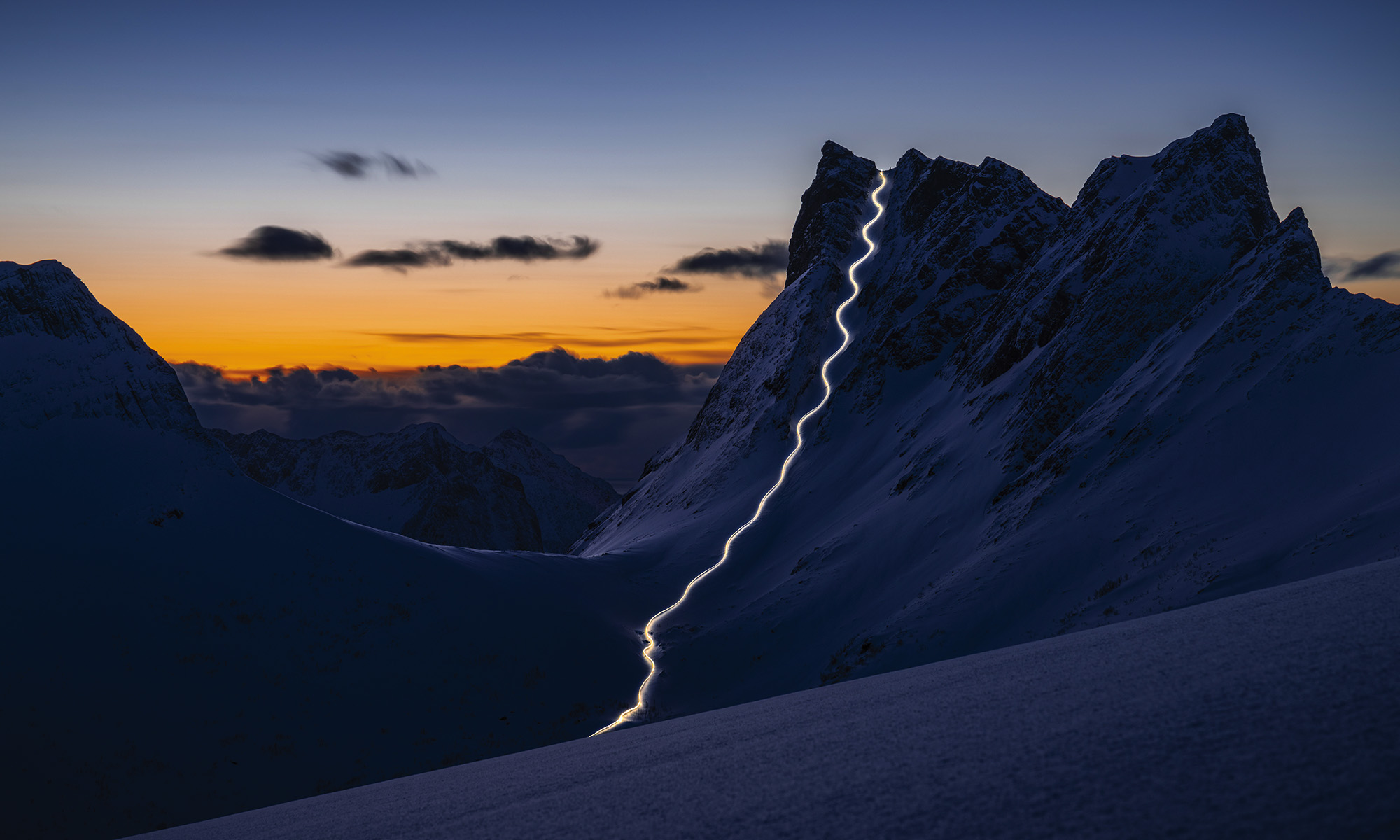
“I began to realize that there is a systemic problem in the way people value wilderness,” Calumn says. “They say you don’t realize what you’ve lost until it’s gone, and that’s the feeling I get in Norway, where I live now, 20 years after traveling there as a child.”
I find that since 2014, 22,000 applications for construction in protected areas have been submitted in Norway, of which 19,000 have been approved. These are giant numbers that need equal if not greater involvement and interest to be countered.
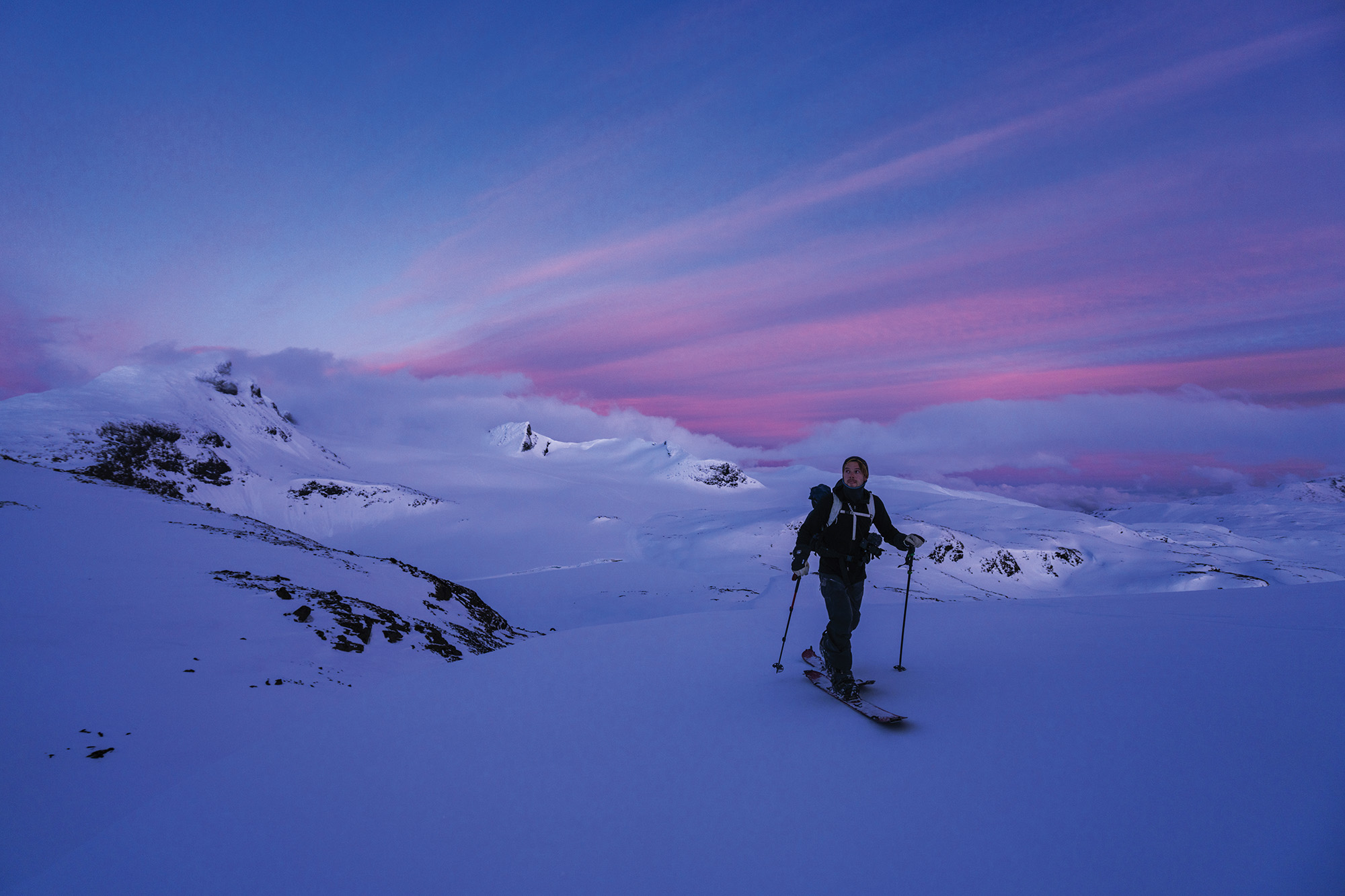
I ask the boys if they have ever received feedback about their project from Norwegian institutions, and Calum responds by telling me an episode that explains a lot.
“In December 2022 Espen Barth Eide, Minister of Climate and Environment, went to this nature and climate conference that was being held in Montreal, where he spoke in favor of a plan to protect 30 percent of the earth’s surface from development. This fact gave us a lot of hope to see that politicians could actually change the state of things, so we decided to give the picture of Ringstind, the one that by all accounts made it look like a ski resort, to Espen Barth Eide for his work on this agreement and to inspire him to put nature at the top of the political agenda back home as well. We soon learned that once he returned home, our minister had approved a plan for a highway in a nature reserve so we finally wrote him a letter explaining that we had thought about sending him the photo but because of what he had done we decided to put the photo up for auction and use the proceeds to pay for a lawyer to fight the highway construction in court.”
A decision of impact, requires a reaction of equal strength.
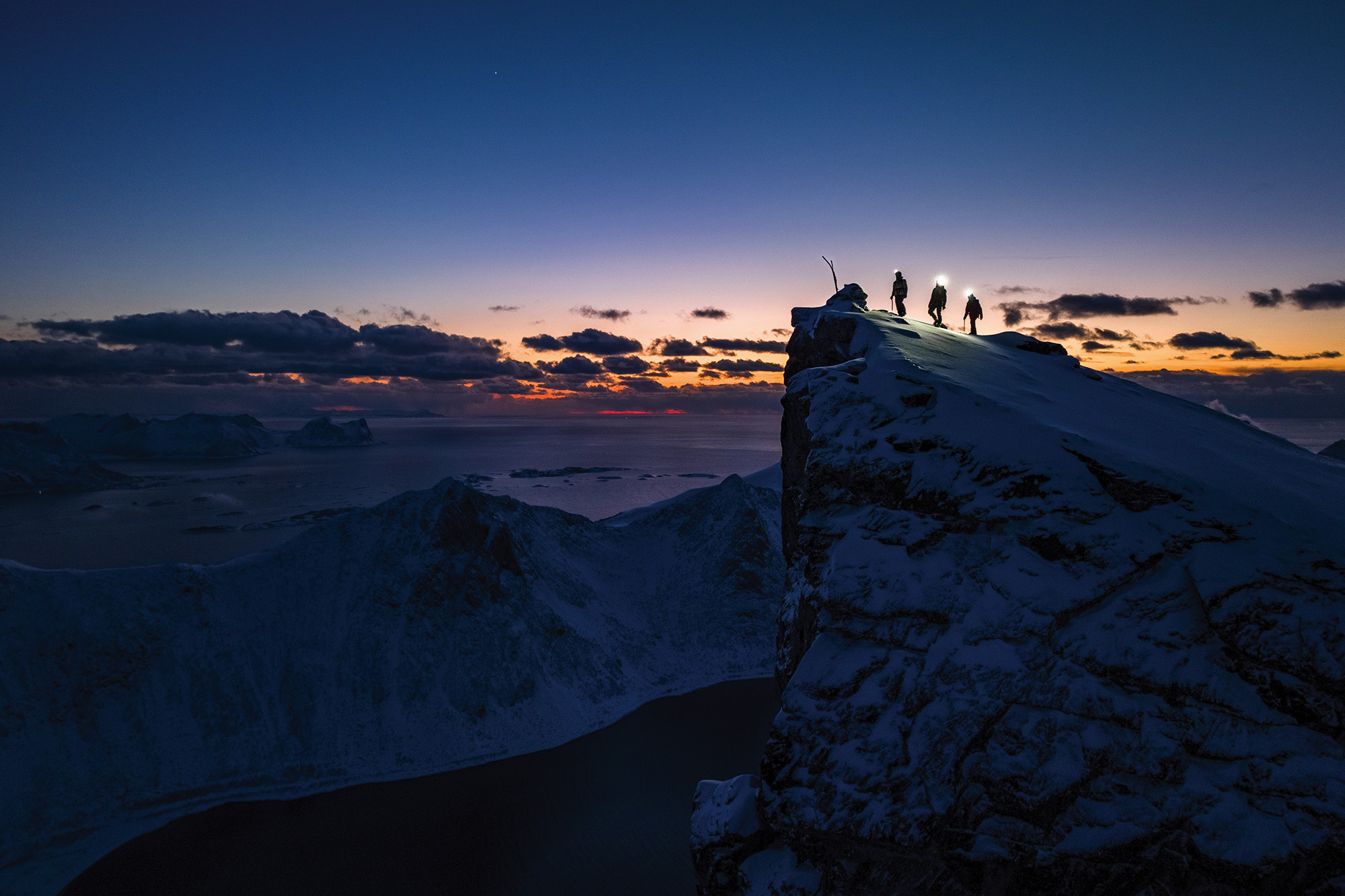
I learn a lot from talking with Calumn and Vegard, especially about what one can do with one’s art; how it can and should be used and what power it has. Photography, writing, drawing can send a clear message, stir consciences and create doubt, without necessarily providing answers. Because none of us has an answer when thinking about what can be done to preserve nature and its future-which then corresponds to our own. But having doubts, asking questions is the start of everything.
And a picture, a word, a light that lasts a fragment of a second, can be the beginning of something destined to change everything, to turn the future upside down, even for the better.
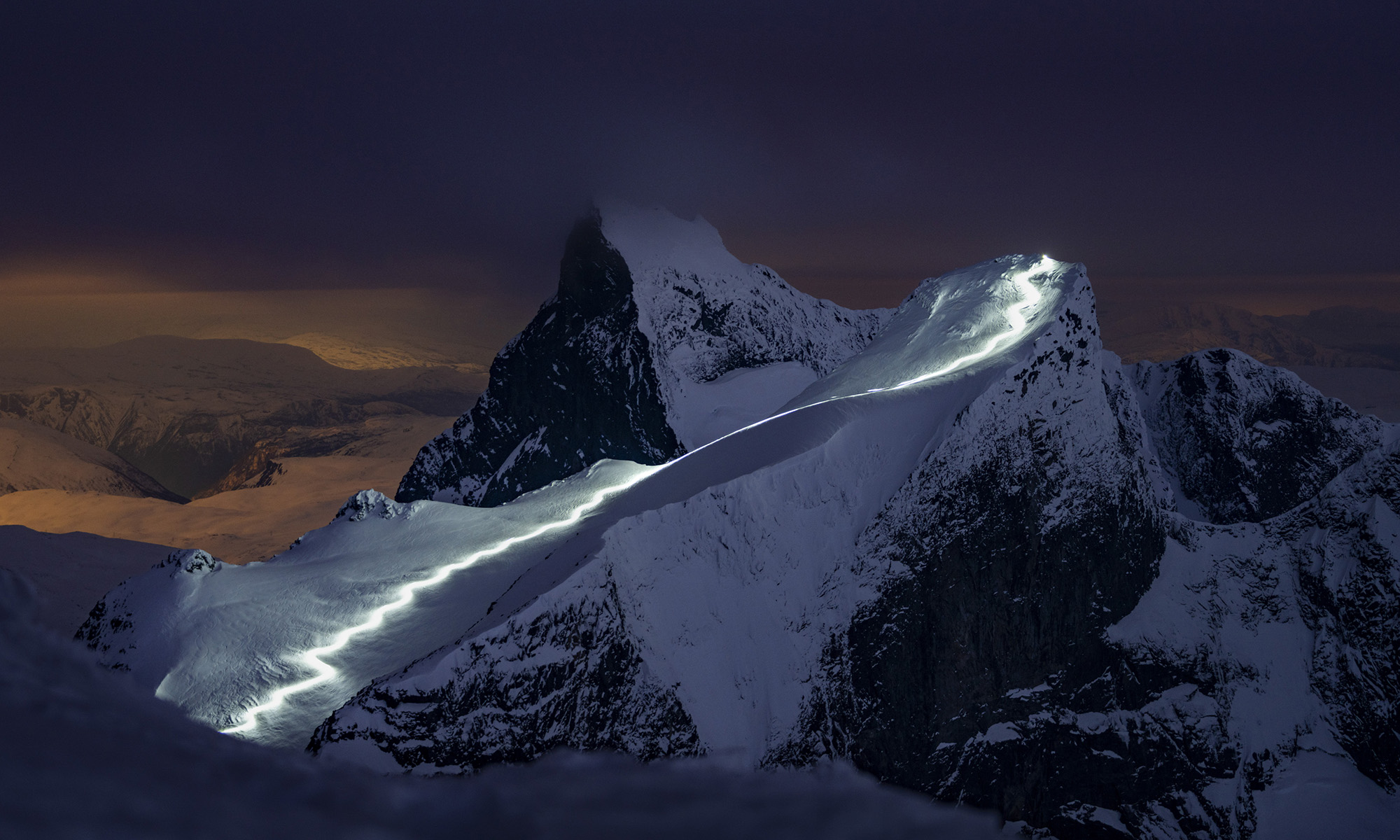
Browse the gallery of photos taken by Adam Gairns, Terje Valen Hoihjelle and Vegard Aasen:
You might also be interested in: Homeland: a skialp only ski area

